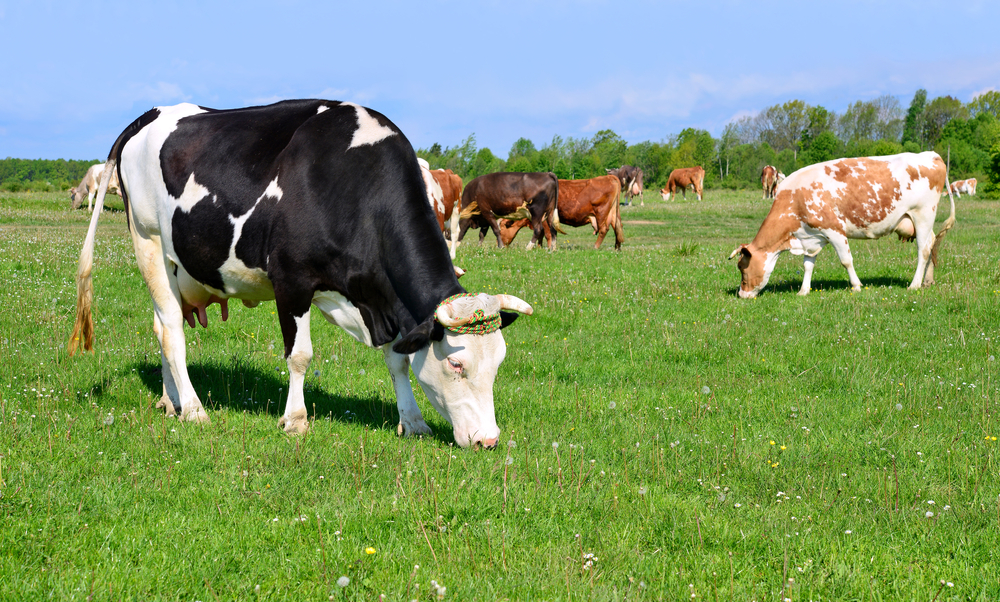Navigating the meat section at the grocery store can be a confusing experience with the various labels on beef products. Understanding the distinctions between grass-fed, grain-fed, and organic beef is essential for making informed choices. Let’s examine the main distinctions and the real meanings behind these titles. By unraveling the nuances of beef labels, consumers can make choices that align with their preferences, ultimately fostering a more mindful and informed approach to meat consumption.
1. Grass-Fed Beef:
Cattle raised on native grasslands are the source of the nutrient-dense, high-quality meat known as grass-fed beef. Because the flesh content of this variety of cattle is lower than that of its counterparts produced normally, it is highly valued. The meat has unique characteristics from the grass-fed diet, such as increased levels of antioxidants and omega-3 fatty acids. Because grass-fed beef has a higher concentration of omega-3 fatty acids, which are vital for heart health, it’s a heart-healthy protein choice. Furthermore, because this meat includes antioxidants, it could have anti-inflammatory properties. Selecting grass-fed beef gives health-conscious customers a nutrient-rich substitute for conventionally farmed beef while also being in line with a more humane and natural agricultural method.
2. Grain-Fed Beef:
A common technique in the cattle business is feeding cattle a diet mostly made up of grains, such as maize or soy, which results in grain-fed beef. This method is well-known for improving marbling or the distribution of intramuscular fat in the meat. For individuals who value a rich and succulent dining experience, grain-fed beef is a popular option because of the marbling, which adds to a more soft and savory texture. Although the marbling enhances the flavor and softness of the meat, it’s vital to remember that grain-fed beef may have less omega-3 fatty acids than its grass-fed cousin. The decision between grain-fed and grass-fed beef typically boils down to personal tastes because each has a unique nutritional makeup and flavor profile.
3. Organic Beef:
Choosing organic beef demonstrates your support for ethical and ecologically responsible production methods in addition to your preference for high-quality meat. When we discuss beef that has been farmed in accordance with certain organic agricultural guidelines, we are discussing meat that comes from cattle. These guidelines cover a whole-farming strategy, not simply the food of the animal. For organic beef, this entails giving it organic feed devoid of artificial fertilizers or pesticides. In addition to ensuring that customers receive tasty, high-quality, dry aged beef, this dedication to organic farming procedures also supports humane and sustainable farming practices. Choosing organic beef is a thoughtful choice that supports the production of food in an ethical and ecologically sensitive manner.
4. Environmental Impact:
Choosing beef that is organic and grass-fed can benefit the environment. In order to promote sustainable land usage, these agricultural techniques usually entail letting cattle graze on natural pasture. Grass-fed operations put the health of the animals and the environment first, in contrast to traditional grain-fed operations, which might lead to deforestation and intensive farming. Grass-fed and organic beef farming reduces the need for large-scale feedlots and the potential environmental problems they may cause by promoting natural grazing. Furthermore, by using fewer chemicals, these methods frequently improve soil health and biodiversity. Choosing organic and grass-fed beef supports sustainable agricultural practices that put the health of the environment and human health first. It also corresponds with consumer choices that are ecologically aware.
5. Certifications and Labels:
It’s critical to read labels and certificates when choosing beef in order to make well-informed decisions regarding the product’s quality and manufacturing processes. A certification such as USDA Organic can guarantee that the beef satisfies particular requirements about animal welfare, organic agricultural methods, and the absence of artificial hormones and pesticides. But it’s important to understand that different labels have different meanings. Certain certificates might not be as closely watched as others, even though they are all heavily controlled and subject to tight rules. In order to make decisions that are in line with their tastes and beliefs, consumers should educate themselves on the meaning behind various labels and certifications. Consider marks such as “Animal Welfare Approved,” “Grass-Fed,” and “Non-GMO Project Verified.” These labels can include information on the origins of the beef, the feed, and the humane treatment of the animals. Always take the time to comprehend the meaning behind different certifications and labeling to make sure the beef you buy is in line with your beliefs and tastes.
Conclusion:
Being aware of these distinctions empowers consumers to make choices aligning with their preferences, whether prioritizing nutritional content, environmental impact, or adherence to organic practices. Understanding the distinctions between various food labels enables consumers to make informed and conscious choices that align with their values, contributing to a more sustainable and health-conscious food landscape.


